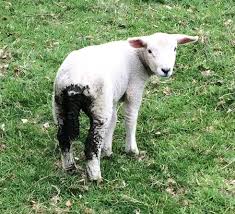Controlling Parasites In Lambs And Calves
6 June 2017At this time of year controlling parasites in young lambs and calves is important to maximise growth rates and avoid losses. While a lot will depend on how the weather changes from here on in, there are a few conclusions which can be made.
Nematodirus
- The cold spell in April, followed by the longer period of warm weather will have provided optimal conditions for a mass hatch of Nematodirus, which is a risk to lambs.
- Nematodirus can cause deaths before the worms have started to produce eggs, so for this parasite, worm egg counts can miss cases. Investigate any deaths in young lambs, as this can be diagnosed on postmortem examination, and consider treating lambs based on the forecast.
- The latest Nematodirus forecast can be found at http://www.scops.org.uk/index.php
- A white drench is the advised treatment for Nematodirus, although resistance has been documented in a small number of cases
- If there are significant numbers of other types of intestinal worms in lambs, it may be necessary to use a different product. This can be determined by looking at worm egg counts in the faeces
Other Nematodes (Roundworms)
The warm temperatures will promote the survival and hatching of all the important species of nematodes which affect the stomach and intestines of calves and lambs. If the very dry spell continues, the eggs and larvae may become trapped inside dried faecal pats. However, they can survive here, and emerge following rain.
The risk of infection, and the time at which infections will occur also depends heavily on the grazing history and the stocking density on the field.
Coccidiosis
Coccidial oocysts (eggs) have a thick shell around them, which protects them from variations in temperature. They will not be destroyed by hot or cold weather particularly effectively, and will have survived the winter on pasture. Subsequent warm weather will promote their development.
They can also cause scour in a similar age of lamb to nematodirus, so it is worthwhile finding out which is the main problem in lambs with diarrhoea. Both can occur together, and cause more severe problems than either alone.
If problems are seen every year at a certain time of year or on a certain field, it would be worthwhile discussing with your vet whether targeted preventative treatments are required, and whether anything can be done to reduce stocking density.
Fluke
The recent dry weather may help reduce the risk of fluke infection this autumn, but a very wet May, June and July could alter this. Consider the risk nearer the time. Up-to-date fluke forecasts can be found at http://www.nadis.org.uk/
Katrina Henderson, Katrina.Henderson@sac.co.uk
Sign up to the FAS newsletter
Receive updates on news, events and publications from Scotland’s Farm Advisory Service

